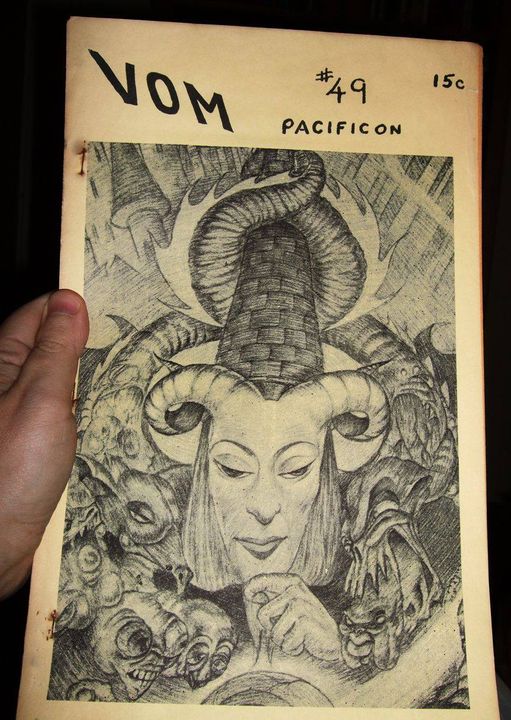Cool posting by Richard Kaczynski on his FB page:
“In July of 1946, Rosaleen Norton was still an aspiring artist, her published work largely limited to three 1941 issues of the free-thinking magazine “Pertinent.” She was yet to be charged with obscenity, censored, and persecuted as the Witch of Kings Cross.
“July of 1946 was ten years before sci-fi superfan Forrest J. Ackerman founded “Famous Monsters of Filmland” magazine. He had only recently been discharged from the U.S. Army, having completed three years as an enlisted man. Since 1939, he had been co-producing, along with Myrtle Douglas, the modest sci-fi fanzine “Voice of the Imagi-Nation” or VOM.
“Thus it was in its penultimate issue #49, of July 1946, that VOM featured cover artwork by then-unknown Rosaleen Norton. The piece, “Merlin,” would be displayed three years later at her infamous 1949 exhibition in Melbourne, where police would seize four of her works as being obscene.
[Curiously, in his 2008 doctoral dissertation on “Rosaleen Norton’s Contribution to the Western Esoteric Tradition,” the late Nevill Drury wrote “[Science fiction author David R.] Evans had sent a copy of one of Rosaleen Norton’s drawings, ‘Challenge,’ to the noted American fantasy collector and literary agent, Forrest J. Ackerman. This drawing, which depicted a naked woman embracing a spider, was published in Ackerman’s newsletter and Norton would later claim on this basis that her occult art was well known in the United States.” It’s unclear whether Drury got the name of Norton’s piece wrong, or if ‘Challenge’ featured in another issue.]
“Regardless, Ackerman became a fan of Norton’s. After her “Art of Rosaleen Norton” (1952) gave government censors a fit, he penned the book review/article “Burn, Witch, Burn!” for the San Francisco magazine “Sex & Censorship” (vol. 1, no. 2, 1958). Ackerman would also commission his stalwart “Famous Monsters of Filmland” cover illustrator, Osman Askin, to create color reproductions of some of her works. I own the Ackerman/Askin copies of “Lucifer” and “Timeless Worlds.”
Thus Ackerman was evidently also a champion and superfan of occult art. Or at least of one occult artist in particular.”

